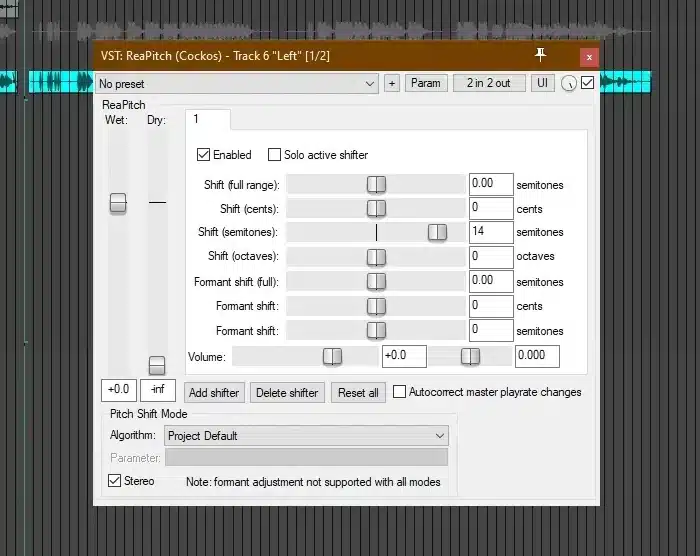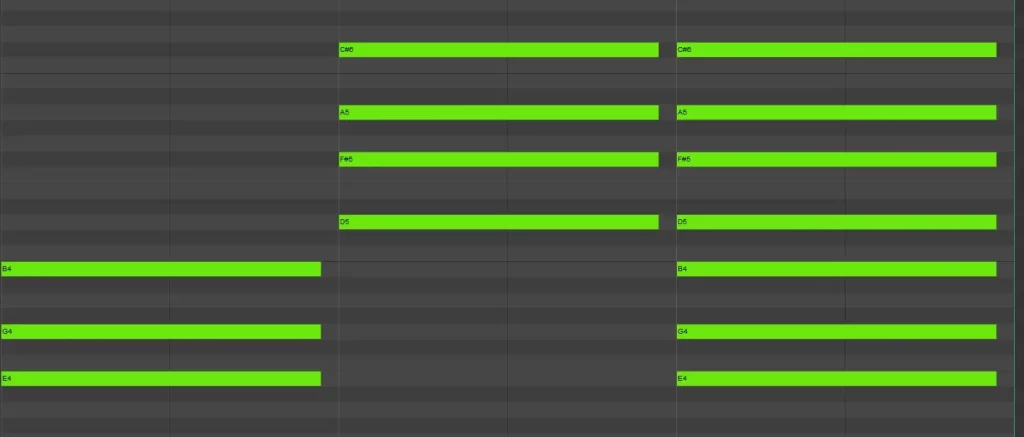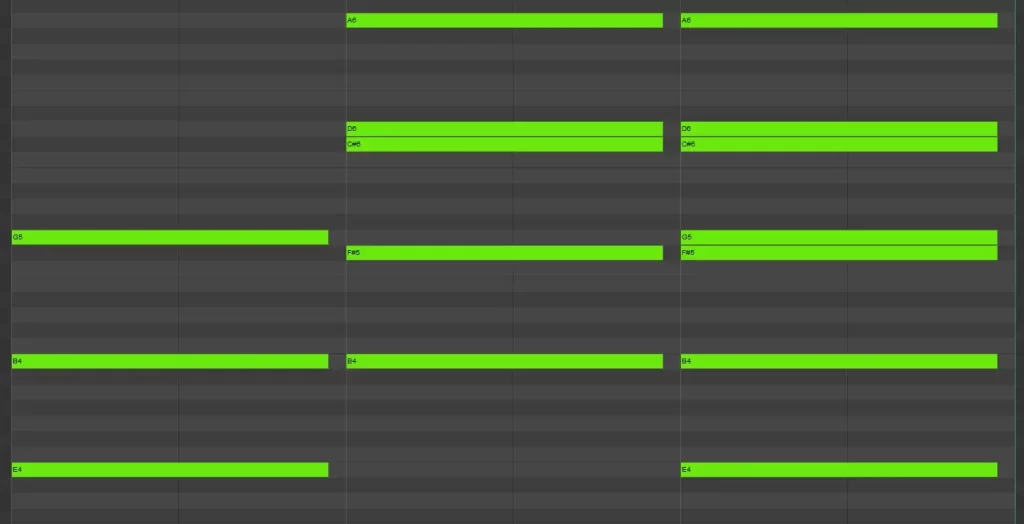Looking for new sounds? Or you don’t have inspiration for chords and harmonies? Then making amazing chords and lush harmonies with a pitch shifter and delay is for you!

The free tutorials and articles from Learning
Of course, we all know how to make our regular chord progressions and melodies. We also know how to add extra harmonies here and there. But what if you’re looking for something that sounds more Lo-fi or more vintage? And how can you do this?
In this
Video Tutorial: The Harmony tones you DON’T play but DO hear | Amazing lush & spacious harmonies
When you want to hear what these pitch shifter and delay effects actually sound like, then check out my video tutorial below. And if you want to learn more about music production and creative songwriting and music composition then check out the linked playlists! Or you can also check out the music production articles on this website!
If you want to read the video transcript see below at the end of this article.
What Is Pitch Shifting?
A question often asked is what does pitch shifting do? Pitch shifting is an effect when you route audio through a pedal or pitch shifter VST, it modifies the sound and raises or lowers the pitch. This can either be fixed tones, like on a guitar or piano. But these can also be smaller values if you want to be more adventurous. A great and free pitch shifting effect is ReaPitch from Reaper. It comes natively with Reaper DAW, but you can also download the plugin for free!
Setting Up The First Pitch Shifter
There are many guitar pedals out there that can do amazing pitch shifting. But the whole idea of this video is that you make the sounds inside your DAW. The benefit of this is that you can use this pitch shifting and delay effect on any instrument that you like.
To start off, you will need to make a send track or aux track for each harmony that you want to add. I use Reaper DAW and here I always make separate tracks for my effects. The first plugin that I will add is a free pitch shifter vst or plugin from Reaper called Reapitch. The first harmony that I’m going to add is a perfect fifth. And a perfect fifth is 7 semitones. Why I chose this specific interval, you can read in the

Setting Up The First Delay
Now that we have our first pitch shifter in place we can start adding a delay. In my case, I will add an Echoboy by Soundtoys. But any delay will do, although I do recommend one that has a bit more advanced options when it comes to modulation. Another great alternative could be the Valhalla Delay.


Because your delay is on an aux track, it has to be set to 100% wet. And you can play around with the delay time or speed to see what you like. In my
When you’re finished setting up the delay, then you pan your track hard left or hard right.
Setting Up any other Pitch Shifter And Delay Tracks
You repeat all the steps of my first two parts. The only difference is that you will need to set your pitch shifter to a different pitch and the delay time to a different time setting. You can repeat this for however many harmonies that you want to add. For this tutorial, I only chose two pitch shifters and delays.
The 2nd pitch shifter is set to a major 9th interval or 14 semitones. And the delay time is different from my other track to create some rhythmic interplay.

Great Pitch Shifter and Delay Harmonies: The Music Theory
When you use pitch shifter and delay harmonies you want to watch out for drowning out your chords. What I mean by that is you need to watch out for what kind of chords you play, because remember that each note will be doubled by your pitch shifter and delay.
So you want to keep your chords simple and spaced out. An extra benefit from simple chords is that your pitch shifter will sound better and cleaner. Pitch shifters find it difficult to shift complicated chords and often the result sounds a bit digital if you ask me.
When I have two pitch shifters that are set to add a perfect 5th and 9th then every note that I will play will have an added 5th and 9th. Just see how cluttered and full my chords would be if I would not take that into consideration.


You need to be practical when choosing what notes you want to play and what notes you want to add. Since the notes of your pitch shifter and delay will be fixed, you need to pick notes don’t won’t sound bad. So a note that you want to avoid adding in your pitch shifter is a major or minor third. Because you can get unwanted clashes of minor and major thirds in your chords.
The reason why I chose a perfect 5th and a major 9th, is because they sound nice and open. And they also go well with many chords or melody lines.


Your Support Matters
Support new videos by becoming a member and receive benefits in return. Or by giving a one-time donation! Help me provide free
https://www.buymeacoffee.com/musicskills
Video Transcript
Do you find it difficult to find inspiring and lush harmonies?
Do you want to give your harmonies a beautiful ambience and amazing stereo width?
With this technique, it will be easy to add surprising new harmonies and beautiful layers to your
This technique or effect is a beautiful example of where
Actually, they intertwine: one cannot go without the other!
And this is what the original chord progression sounded like:
You know actually, you could even use this technique on just single notes!
And can you only use this on guitar? No of course not. You can use this on any instrument that you like. The benefits of this technique is you create new tones and exciting chords and almost reverb-like effect and amazing stereo width.
For this episode, I cannot really separate the
So here’s my project where i’ve also already recorded the guitar part. I’m going to create this spacious multi-voiced effect by using two send tracks. And probably there’s a plugin that can do all of this in all at once. But i just feel that i have more control over the effect when i send it to two separate send tracks.
So the first thing that I’m going to add is a pitch shifter to this. And i want the first pitch shifter to shift a perfect fifth up and that will translate to seven semitones. Now in the next effects slot i’m going to add my favorite delay from soundtoys which as you might know is echo boy. It’s going to be synchronized to the bpm of the track. Set it to a hundred percent wet. I want the rhythm to be a 16th note. I’m going to add some feedback so it sounds nice.
Next thing I’m going to add some saturation to the delay and i’m going to set the mode to memory man.
So now it sounds like this:
But the thing is I’m not really creating stereo width yet.
I’m going to pan it hard right. And now you can hear in the right speaker you have this extra added tone. Off to the next one!
So in the left track, I’m also going to add a re-pitch but I’m going to set it to a major 9 up or in this case 14 semitones. Let’s now also add echo boy with almost similar settings but what i’m going to change is the rhythm. It’s going to be a dotted eighth note. And of course, we’re going to pan it hard left. Now we have this interesting interplay between the left and the right speaker and what we have in the middle!
I really love that almost reverb-like sound. It’s absolutely amazing! But what kind of chords and melodies actually work well with this technique? Let’s find out what notes to use on the pitch shifter and how to space your chords.
When using pitch shifters you want to keep the chords simple and nicely spaced. Not only does it sound better technically but also your chords will sound less cluttered or less muddy. Here’s how it works:
When I have two shifters with one set to plus a perfect fifth and the other two plus a major ninth. Then every note that I will play will be doubled with a perfect fifth and a ninth. Just look at how cluttered that would sound. That’s why you want to open up the voicing a bit to spread out all the notes.
So how do you choose what notes to set the shifters to? Well here you have to be practical and pragmatic since the notes will be fixed you want the notes to sound good on each and every chord that you play.
For this reason, you mainly want to avoid the intervals of thirds and sixths because these will give you trouble when switching between major and minor chords. Major and minor thirds they define the gender of the chord if it’s major or minor. Just imagine doubling a major third on a minor chord. If not done intentionally it will definitely sound out of place.
And what I did, in this case, is the perfect fifth has a very open sound and also the major 9th has a very open sound, so these notes don’t interfere that much. They just add colour. Now you’re ready to lay down some beautiful atmospheres and colours.
So what do you think about the sound of these added tones? Would it be something that you would use on a melody or a chord progression? Let me know in the comments!
Of course, don’t forget to like the video for some extra love and subscribe if it is useful.
And for now…
See you next time!








